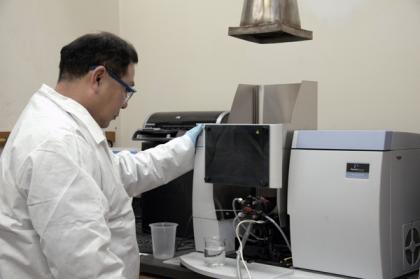Atomic spectroscopy is perhaps the most prominent and widely Used of the household of methods employed for elemental analysis. In this tutorial Dr Gary M Hefted in Indiana University takes us right back to the grass roots which makes it ideal reading for either the graduate or anybody wishing learn more about this important branch of analytical chemistry. Atomic spectroscopy also termed nuclear spectrometry is one of the earliest and most well-established of the analytical methods. Its origins can be traced to very early observations in which the presence of specific salts at a compound sample imparted characteristic colors to a luminous flame. Atomic spectrometry is possibly the most prominent and widely used of the household of methods employed for elemental analysis.

All methods for elemental analysis, including nuclear Spectrometry, exploit quantized transitions characteristic of each individual element. Conveniently, atomic spectrometry uses quantized transitions in the conveniently accessible ultraviolet, visible, and near-infrared areas of the electromagnetic spectrum. Because of this, the atomic absorption spectroscopy instrumentation is relatively inexpensive, readily available, and easy-to-use. Needless to say, it is valance electronic transitions that exist in these mountainous areas. For narrow-band, characteristic spectra to be generated then requires each atom to be isolated from all others, so the transitions are not perturbed by neighbouring atoms or by bonding effects. If this requirement is not met, the resulting spectra are representative more of molecules or molecular fragments than of atoms themselves.
Accordingly, the underlying requirement for all atomic methods of evaluation is that a sample be decomposed to the best extent possible into its constituent atoms. Ideally, this atomization step ought to be quantitative; there should be no residual bonding at the gas-phase atomic cloud. Anything less than complete atomization will understandably yield lower sensitivities in any atomic method. Much more importantly, changes in the fraction of atomization from sample to sample or from sample to standard will cause errors in calibration. Thus, it is less important that complete atomization be achieved than that the fractional atomization be extremely consistent. To the extent that this condition is not fulfilled, interelement matrix interferences in nuclear spectrometry can be particularly troublesome. It is not surprising, then, a consistent theme in the History of atomic spectrometric analysis is a search for improved methods of atomization for samples in solid, solution, or gaseous form. It is therefore appropriate that we consider such systems in some detail here.